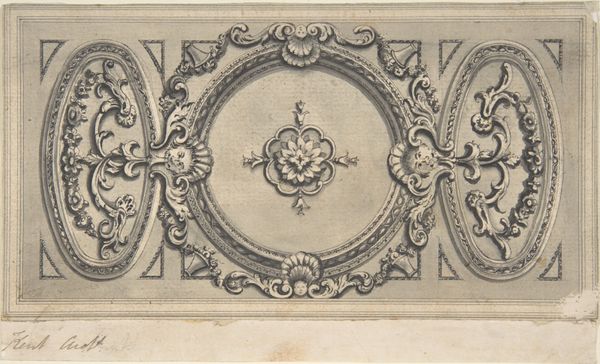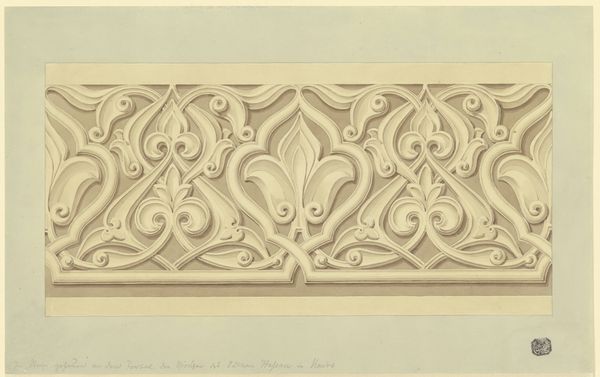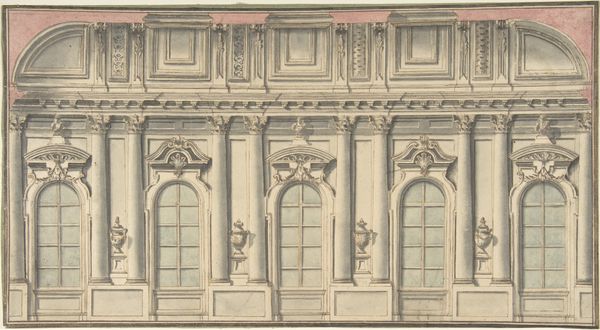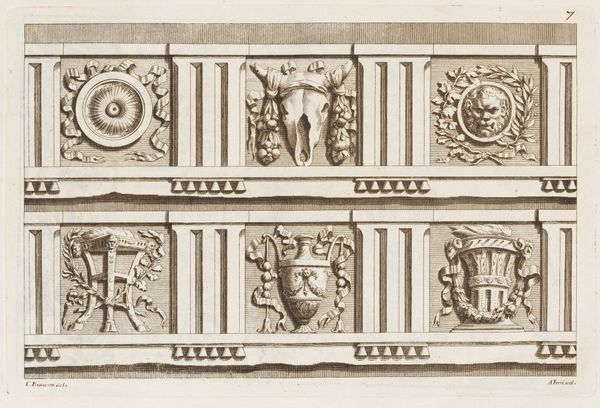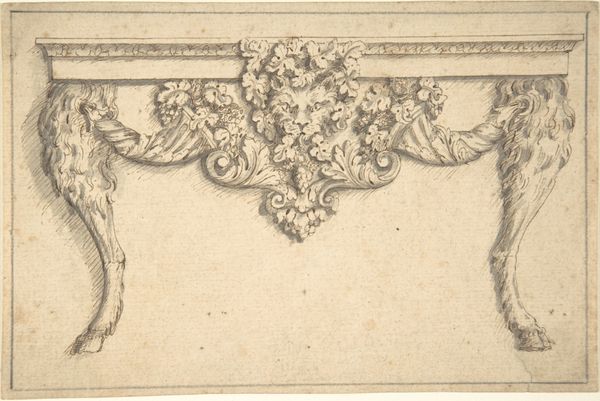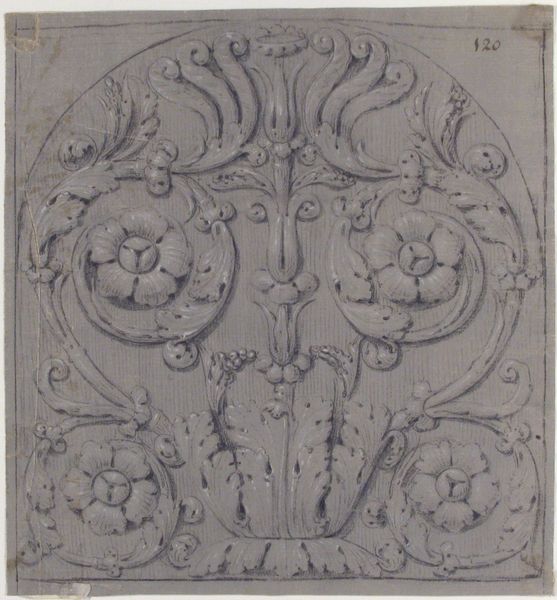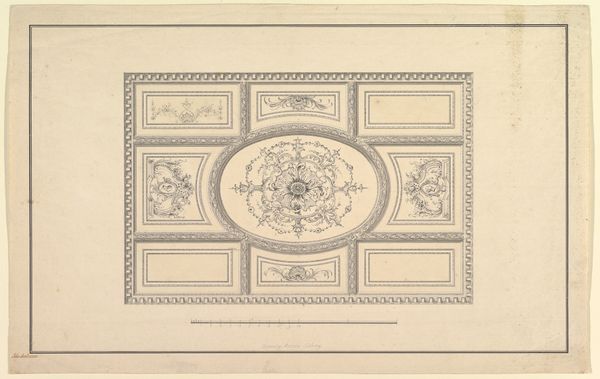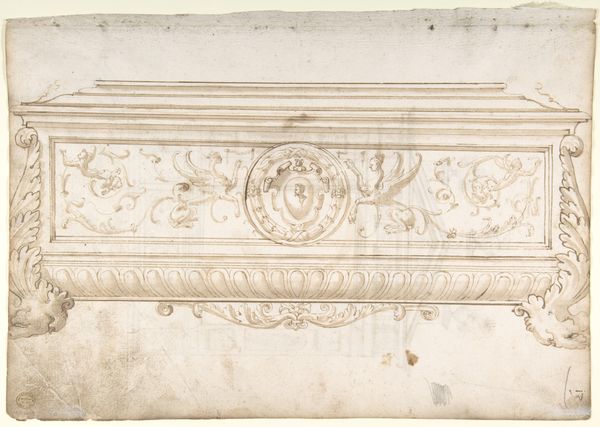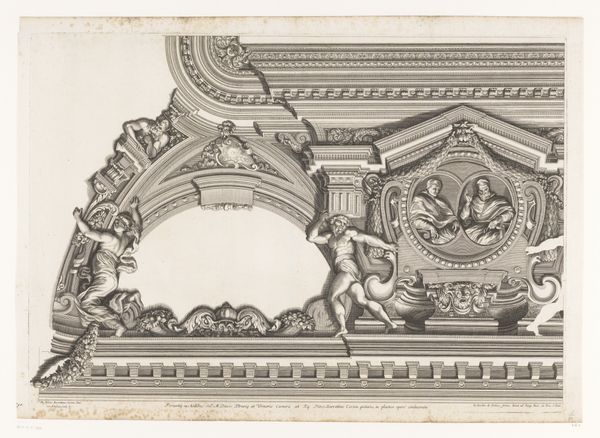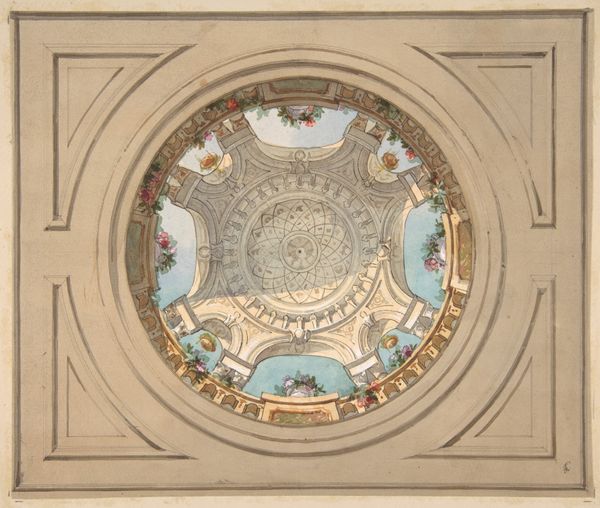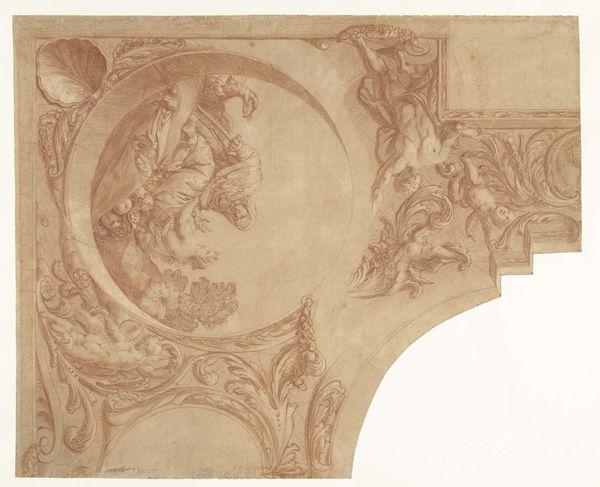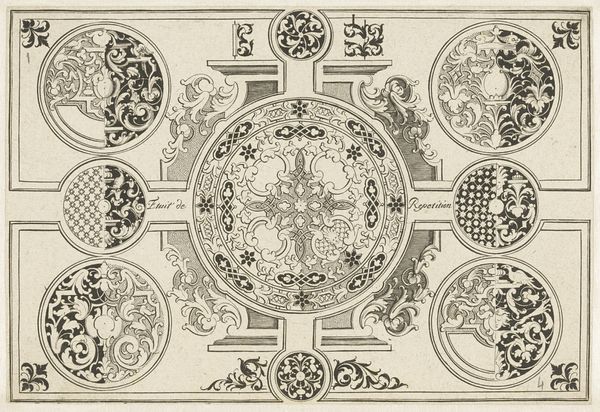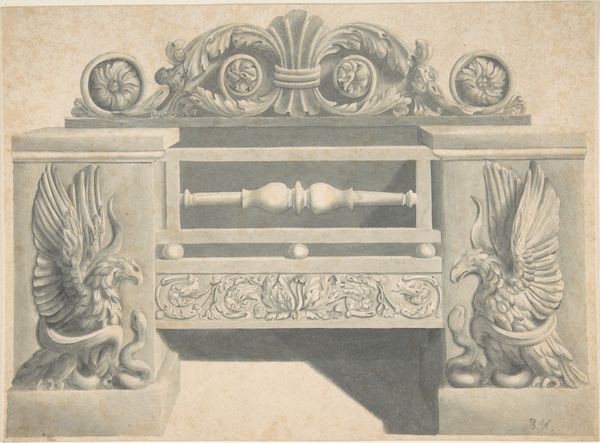
Design for a Frieze, Ornamented with Lion's Head Paterae 1770 - 1821
0:00
0:00
drawing, ornament, print, pencil
#
drawing
#
neoclacissism
#
ornament
# print
#
classical-realism
#
pencil
#
history-painting
#
pencil art
Dimensions: sheet: 13 1/2 x 25 3/4 in. (34.3 x 65.4 cm)
Copyright: Public Domain
Curator: At first glance, it's quite captivating with its intricate detailing! What do you think? Editor: Certainly impressive. The interplay of shadow and line creates a striking effect. It makes me consider the labor invested in its creation—each stroke contributing to this refined ornamental structure. Curator: Indeed. This is John Yenn's "Design for a Frieze, Ornamented with Lion's Head Paterae," dating from 1770 to 1821. A meticulous drawing employing pencil and printmaking techniques. I find the visual tension compelling, particularly between the rigid geometric forms and the organic foliate motifs. The lion’s head seems strategically positioned as a focal point. Editor: Yes, the material rendering is remarkable. I see echoes of workshops where artisans labored to transpose these designs onto walls and buildings. The choice of such refined patterns in pencil indicates how valued these patterns were; pencil sketches enabled transferal for repetition by many craft workers. One thinks about their contribution in terms of skills rather than creativity itself, even as this ornamental language projects messages about elite values through neoclassical symbols—its production history needs uncovering too Curator: Precisely! Observe the Apollonian clarity of its composition—the symmetry, the balanced distribution of weight, and the calculated use of light and shade to accentuate depth. Each element adheres to classical principles of order and harmony. Editor: I agree, and understanding the context reveals even more of its complexity! It would be useful to unpack where that labour came from at this moment in history in this building! Was it made using local hands from across town or enslaved hands from abroad whose labor would have enriched its intended commissioners lives by freeing them from making things directly but then, it all collapses; its aesthetic appeal now carries further weight when understanding how it actually got produced... Curator: Yes, this exercise really invites speculation, doesn't it! It highlights how artwork analysis brings differing viewpoints depending how you approach things--the creative impulse is more multi-layered than people realize . Editor: True! Looking closer shows us far more than expected; what happens with our understanding influences even perception too!
Comments
No comments
Be the first to comment and join the conversation on the ultimate creative platform.

